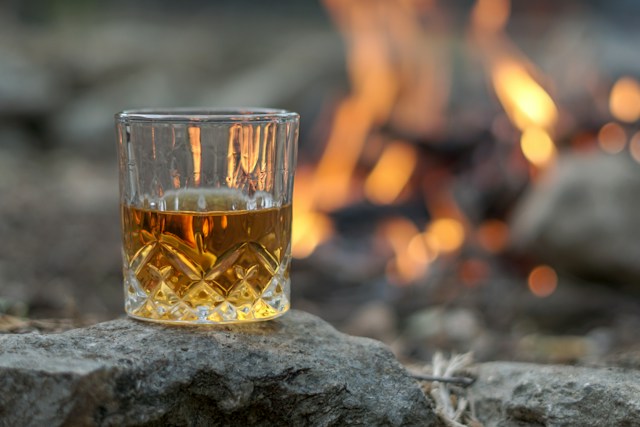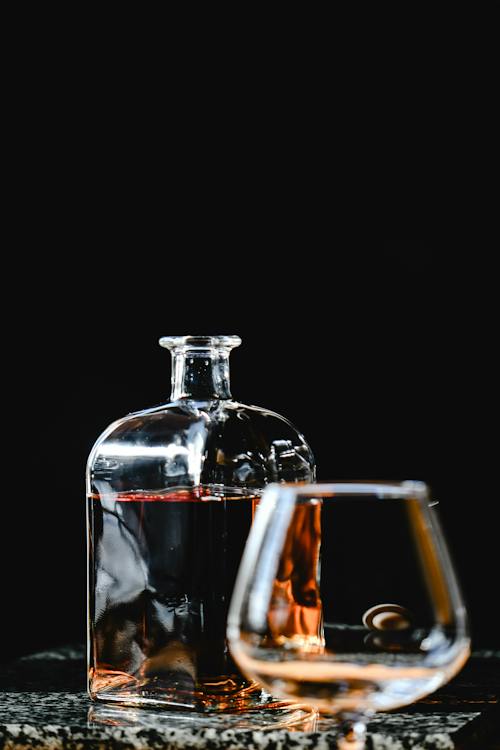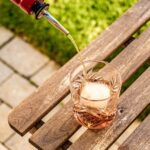
Bourbon is a type of whiskey that is known for its unique flavor and color. The color of bourbon can range from light amber to dark brown, and it is an important characteristic that can give clues about the age and flavor profile of the spirit. Many bourbon enthusiasts use a bourbon color chart to help them identify the color of different bourbons and understand what it means.
Table of Contents
Understanding Bourbon Colors
Bourbon is known for its rich, dark color that ranges from reddish-brown to amber. The color of bourbon is a result of the aging process, as it spends several years in charred new oak barrels. The barrels are charred to release the natural sugars and flavors of the oak, which then infuse into the bourbon.
The Science of Bourbon Coloration
The color of bourbon is a complex phenomenon that involves several chemical reactions. During the aging process, the bourbon interacts with the wood of the barrel, which imparts flavor and color to the spirit. The charred oak releases a compound called vanillin, which gives the bourbon its characteristic vanilla flavor and aroma.
The color of bourbon is also influenced by the amount of light and oxygen that the spirit is exposed to during aging. Light can cause the bourbon to darken more quickly, while oxygen can cause the bourbon to lose some of its color.
Factors Influencing Bourbon Color
Several factors can influence the color of bourbon, including:
- Age: The longer the bourbon is aged, the darker its color will be.
- Barrel char: The degree of char on the barrel can affect the color and flavor of the bourbon.
- Barrel size: The size of the barrel can influence the amount of interaction between the bourbon and the wood, which can affect the color and flavor of the spirit.
- Storage location: The location where the bourbon is stored can affect its color, as temperature and humidity can influence the aging process.
 photo credit: www.pexels.com
photo credit: www.pexels.com
Standard Bourbon Color Chart
Bourbon’s color can range from light amber to dark mahogany. The color of bourbon is a result of the aging process and the type of oak barrel used. The longer the bourbon is aged, the darker the color will be.
Light Amber
Light amber bourbon is usually aged for two years or less. It has a light, golden color and is often described as having a sweet and mild flavor. Some popular light amber bourbons include Jim Beam White Label and Old Crow.
Rich Amber
Rich amber bourbon is aged for four to six years. It has a darker color than light amber and a more complex flavor profile. Rich amber bourbons are often described as having notes of vanilla, caramel, and oak. Some popular rich amber bourbons include Buffalo Trace and Four Roses.
Deep Amber
Deep amber bourbon is aged for six to eight years. It has a deep, rich color and a more robust flavor profile than rich amber bourbon. Deep amber bourbons are often described as having notes of leather, tobacco, and dark fruit. Some popular deep amber bourbons include Knob Creek and Elijah Craig.
Golden Brown
Golden brown bourbon is aged for eight to ten years. It has a golden brown color and a smooth, complex flavor profile. Golden brown bourbons are often described as having notes of honey, spice, and oak. Some popular golden brown bourbons include Wild Turkey and Woodford Reserve.
Dark Mahogany
Dark mahogany bourbon is aged for ten years or more. It has a dark, rich color and a full-bodied flavor profile. Dark mahogany bourbons are often described as having notes of dark chocolate, espresso, and smoke. Some popular dark mahogany bourbons include Pappy Van Winkle and Booker’s.
Assessing Bourbon Quality by Color
Bourbon is a complex spirit that can be evaluated based on several factors, including color. The color of bourbon can provide valuable information about its age, flavor, and quality. In this section, we will explore how to assess bourbon quality by color.
Visual Clarity and Color Consistency
The visual clarity and color consistency of bourbon are important indicators of quality. High-quality bourbons should have a clear, consistent color with no visible sediment or cloudiness. The color should be vibrant and rich, indicating that the bourbon has been aged properly and has not been diluted or artificially colored.
One way to assess the visual clarity and color consistency of bourbon is to hold the glass up to the light and examine it closely. The color should be consistent throughout the glass, with no visible variations or discolorations. If the bourbon appears cloudy or has visible sediment, it may be an indication of poor quality or improper aging.
Color as an Indicator of Age and Flavor
The color of bourbon can also provide valuable information about its age and flavor profile. As bourbon ages in oak barrels, it takes on color and flavor from the wood. Younger bourbons tend to be lighter in color, while older bourbons are darker and richer.
The color of bourbon can also provide clues about its flavor profile. Darker bourbons tend to have a richer, more complex flavor profile with notes of caramel, vanilla, and oak. Lighter bourbons, on the other hand, tend to be smoother and more mellow, with subtle hints of sweetness.
The Role of Barrels in Color Development
Bourbon’s color comes from aging in charred oak barrels. The longer the bourbon ages, the darker its color becomes. The barrels used to age bourbon must be made of new, charred oak, which gives bourbon its signature flavor and color.
Wood Type and Toasting Levels
Different types of wood can be used to make barrels, but American white oak is the most commonly used for bourbon. The wood’s unique properties, including its density and porosity, help to create the flavor and color of the bourbon.
The toasting level of the barrel also plays a role in the color development of bourbon. The longer the barrel is toasted, the darker the color of the bourbon will be. The toasting process caramelizes the natural sugars in the wood, which gives the bourbon its distinctive flavor and color.
Barrel Aging and Color Transformation
Once the bourbon is placed in the barrel, the aging process begins. As the bourbon interacts with the charred oak, it takes on the flavors and colors of the wood. The longer the bourbon is aged, the more color it will absorb from the barrel.
During the aging process, the bourbon also undergoes a chemical reaction called esterification. This reaction occurs between the alcohol and the wood, creating new compounds that contribute to the flavor and color of the bourbon.
Bourbon Color and Consumer Perception
The color of bourbon is an important factor in consumer perception. It can give clues about the age, flavor, and quality of the bourbon. Consumers often associate darker colors with richer flavors and higher quality. However, this is not always the case.
The color of bourbon is affected by several factors, including the type of barrel used for aging, the length of aging, and the proof of the bourbon. The longer a bourbon is aged, the darker its color will be. However, the type of barrel used for aging can also affect the color. Bourbon must be aged in new, charred oak barrels, which can give it a reddish-brown color.
Consumers often assume that darker bourbons are aged longer and have a richer flavor. However, this is not always the case. The color of bourbon can be manipulated by adding caramel coloring or filtering the bourbon through charcoal. This can give a bourbon a darker color without affecting its flavor or quality.
Frequently Asked Questions
Can the color of bourbon indicate its quality or flavor profile?
While the color of bourbon can provide some insight into its age and maturation process, it does not necessarily indicate its quality or flavor profile. The flavor of bourbon is determined by a variety of factors, including the mash bill, yeast strain, and distillation process.
What is the typical color range for bourbon whiskey?
The color of bourbon can range from a light amber to a deep, dark brown. This variation in color is due to the aging process and the type of barrel used for maturation.
How do different types of barrels influence the color of bourbon?
The type of barrel used for aging can have a significant impact on the color of bourbon. New charred oak barrels are typically used for aging bourbon, and the charred interior of the barrel can contribute to the color of the final product. Additionally, barrels that have previously been used to age other spirits or wines can also influence the color of the bourbon.
What factors contribute to the variation in bourbon colors?
Several factors can contribute to the variation in bourbon colors, including the age of the bourbon, the type of barrel used for aging, and the location and climate in which the bourbon is aged. Additionally, the use of different grains in the mash can also impact the color of the final product.
How can one describe the color of bourbon using standard color terminology?
Bourbon colors are typically described using standard color terminology such as amber, copper, or mahogany. These colors are determined by the amount of time the bourbon has spent aging, as well as the type of barrel used. The color can also be influenced by the climate in which the bourbon is aged, as well as the specific location within the aging warehouse.
Conclusion
The color of bourbon is an important indicator of its age, flavor, and quality. As discussed, the color of bourbon is influenced by several factors, such as the type of barrel used, the char level of the barrel, and the length of time the bourbon is aged.
The color of bourbon is a fascinating topic that is worth exploring for any bourbon enthusiast. By understanding the factors that influence the color of bourbon, one can gain a deeper appreciation for this beloved spirit.
Related Posts
If you’re interested in learning more about bourbon, there are many resources available online. Here are a few related posts that you might find helpful:
- What is Moonshine Whiskey: A Guide to the Illicit Spirit: Moonshine whiskey is a term that has been around for centuries, and yet many people are still unsure of what it actually means. This post provides an overview of what moonshine whiskey is, how it’s made, and why it’s often associated with illegal activity.
- What Does an Old Fashioned Cocktail Taste Like?: The Old Fashioned cocktail is a classic drink that has been around for over a century. This post provides a detailed description of what an Old Fashioned tastes like, and includes a recipe for making one at home.
- What U.S. State Name is on Jim Beam Whiskey Labels?: Jim Beam is a well-known brand of bourbon whiskey, and one of the unique features of its labeling is that it includes the name of a U.S. state. This post explains the history behind this labeling tradition and provides a guide to the different state names that have appeared on Jim Beam labels over the years.
- Virginia Black Whiskey Price: How Much Does It Cost?: Virginia Black Whiskey is a popular American whiskey that has gained a lot of attention due to its association with the famous rapper, Drake. This post provides an overview of the brand and its history, as well as information on the price of a bottle.
- What Color is Bourbon?: Bourbon is known for its distinctive color, which is primarily due to the aging process in charred oak barrels. This post provides a detailed explanation of what gives bourbon its color, and includes information on the different shades of bourbon that you might encounter.



